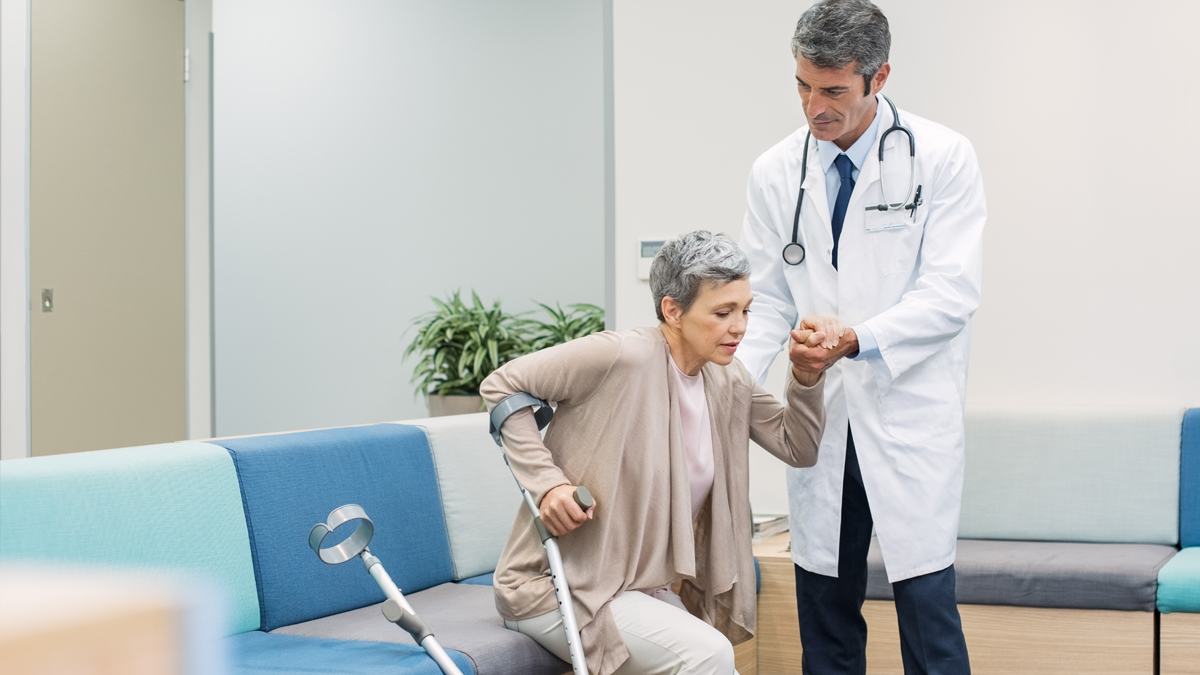Osteoporosis can be a crippling malady, striking many elderly women and drastically altering or eventually taking their lives.
Osteoporosis is a bone disease that occurs when the body loses too much bone, makes too little bone or both. As a result, bones become weak and may break from a fall or even from sneezing or minor bumps. Osteoporosis means “porous bone.” Viewed under a microscope, healthy bone looks like a honeycomb. With osteoporosis, the holes and spaces in the honeycomb are much larger than in healthy bone. Osteoporotic bones have lost density or mass and contain abnormal tissue structure. As bones become less dense, they weaken and are more likely to break.
According to Stacey L. Rothwell, PA-C, at the Medical University of South Carolina Orthopaedic Trauma Surgery, who serves as fragility fracture liaison for the program, older patients especially are affected by osteoporosis once they have a fracture because they often end up in a subacute/nursing facility and take a long time to recover to their previous level of activity. Many of them do not attain their original level of independence. Being hospitalized for a hip fracture can also be associated with other conditions and complications, such as pneumonia or heart attack, that can drastically affect their recovery.
Maximilien Rappaport, DO, assistant professor of clinical medicine at the University of South Carolina School of Medicine in Greenville, pointed to a recent study of Medicare recipients that reported that around 300,000 hip fractures occur in the United States annually. Of this number, 30% of the individuals suffering the fracture will die within a year, another 25% will wind up in a nursing home and only 15% will be able to walk across a room unaided six months after the fracture.
Dr. Rappaport said many patients stop taking medication that could help prevent another fracture because of concerns about adverse side effects of the drugs being administered, which he said, “are very rare.” And many individuals will not be treated or tested once they have suffered a fracture.
“Through testing and treatment, we could prevent 50% of the refractures that occur,” he said.
As the baby boomers age, an increasing number of people are diagnosed with osteoporosis.
“It is a very underdiagnosed and undertreated disease,” said Rothwell. “It is considered a silent disease until someone falls and sustains a fracture. There is considerable morbidity associated with fragility fractures, which is why we are trying to be more aggressive and proactive with treating osteoporosis to help prevent future fragility fractures.”
Osteopenia and osteoporosis are both “silent” diseases. Usually, the first warning sign is a fragility fracture – a fracture sustained by a ground level fall or other injury that should not typically break a bone. Regular DEXA (dual-energy X-ray absorption) screening after the age of 60 without risk factors, or at 50 with risk factors, is recommended, said Rothwell.
According to Dr. Rappaport, some of the signs of osteopenia/osteoporosis are a loss of height and back pain.
“If a person has lost an inch and a half of height, that is an indicator of a risk for osteoporosis,” he said.
He added that while a majority of those affected with osteoporosis are “older post-menopausal, Mexican-American or non-Hispanic white women,” that does not mean it doesn’t occur in other segments of the population. Anyone who has taken high doses of steroids, is suffering from a chronic illness, has rheumatoid arthritis or has been a smoker or heavy drinker in the past carries a greater risk of osteoporosis. Low-weight, malnourished individuals also are at greater risk.
Individuals can work on improving bone strength with a diet high in protein, vitamin D (such as in fish, eggs and fortified milk) and calcium (dairy products). Participating in regular weight bearing or resistance exercises also is important to building strong bones. There are multiple antiresorptive and anabolic medications available to help prevent bone resorption and increase osteoblasts to improve bone density. It is important to get 1,200 milligrams of calcium daily, either in your diet or with supplementation. Having good balance, which includes wearing properly fitting shoes, also helps prevent falls and subsequent fractures.
Individuals with osteoporosis should restrict their exercise to low impact, weight-bearing activities such as fast walking, stair machines and elliptical training. Avoid lifting more than 10 pounds over your head.
And, be tested early to determine if you may be at risk for osteoporosis. It may just save your way of life, or, indeed, your life.
By John Torsiello







